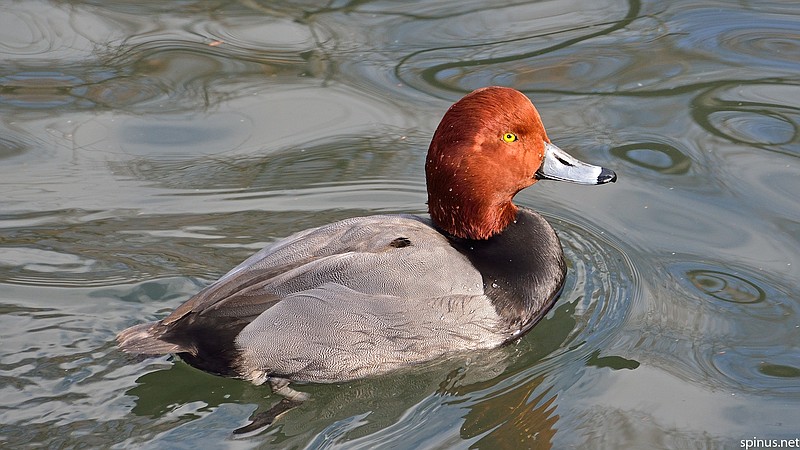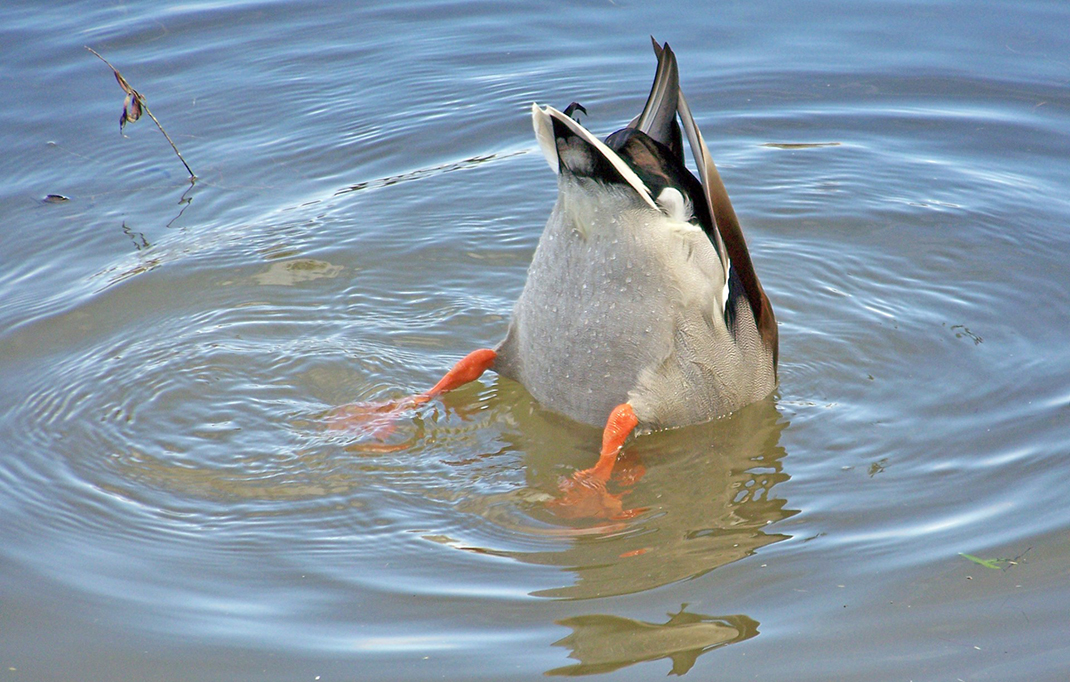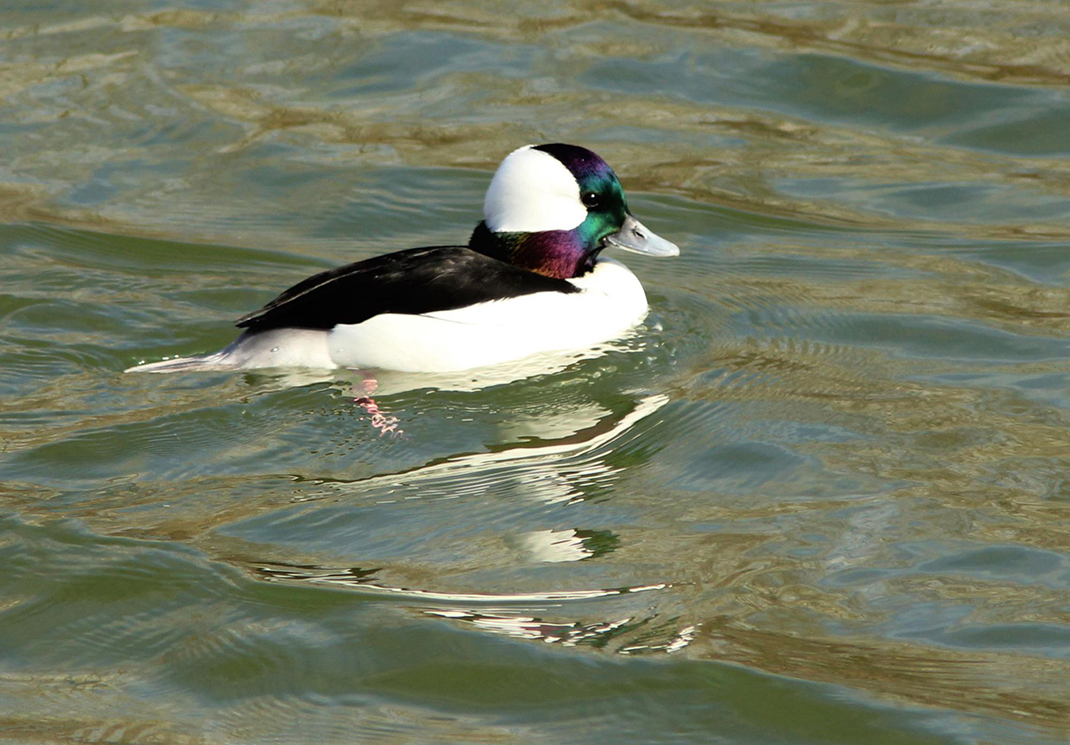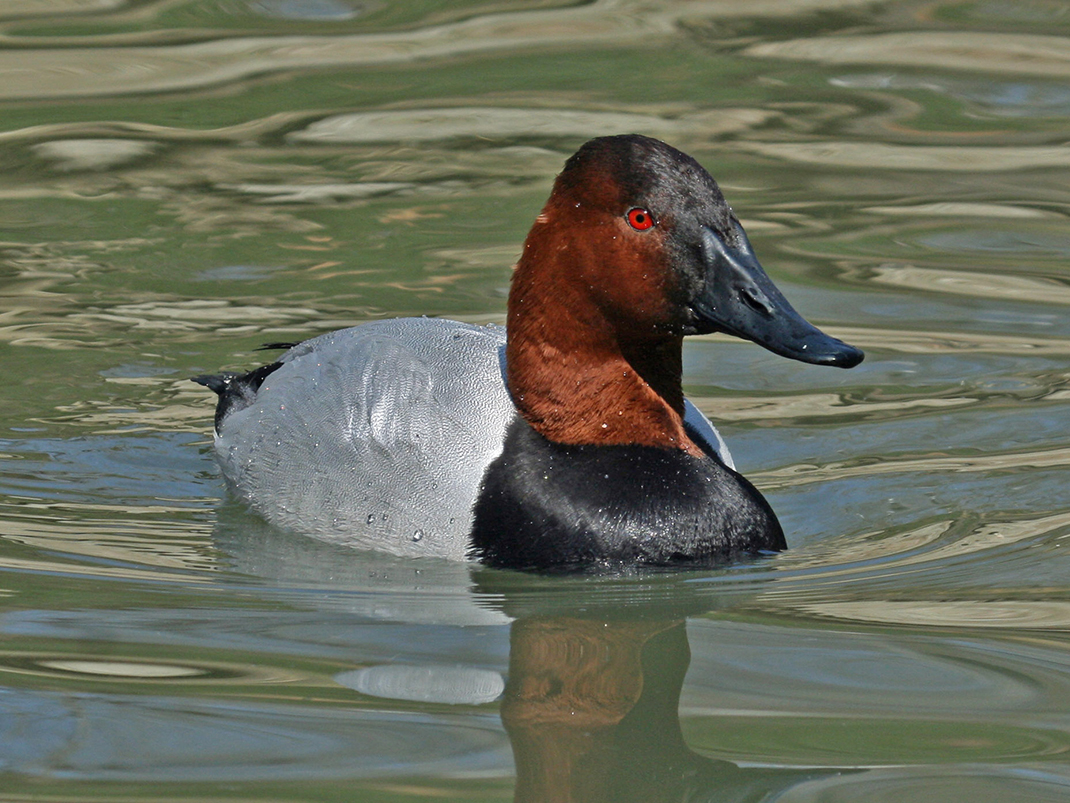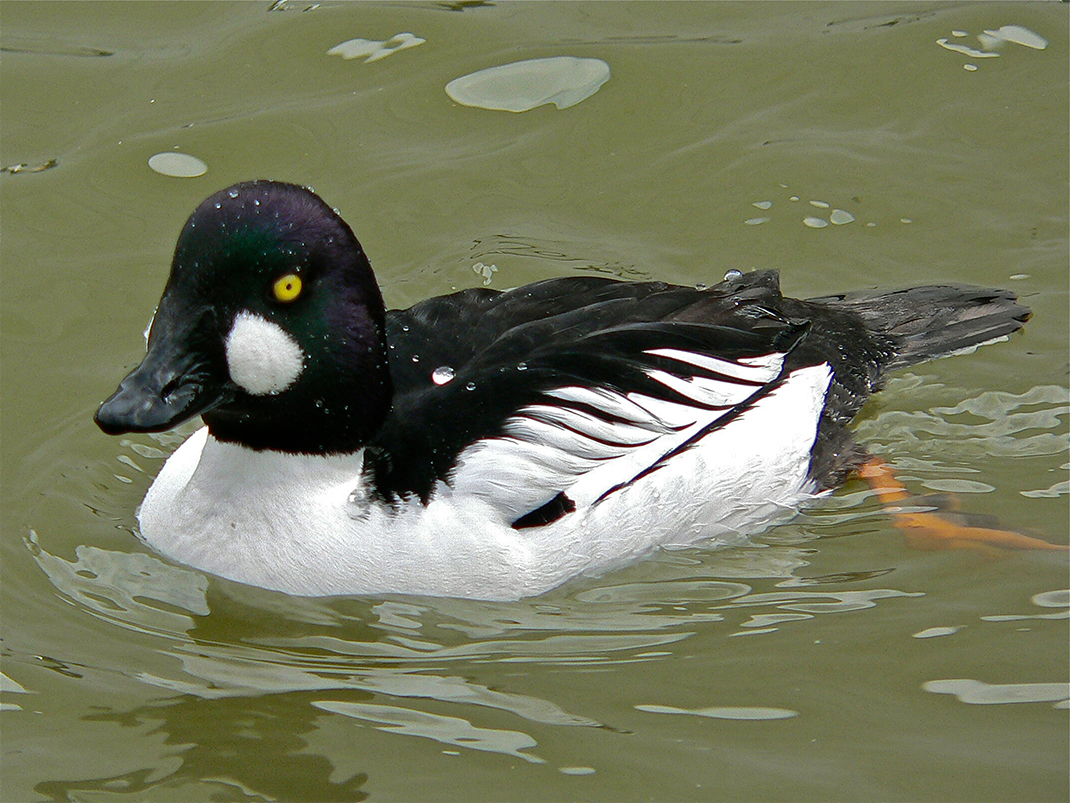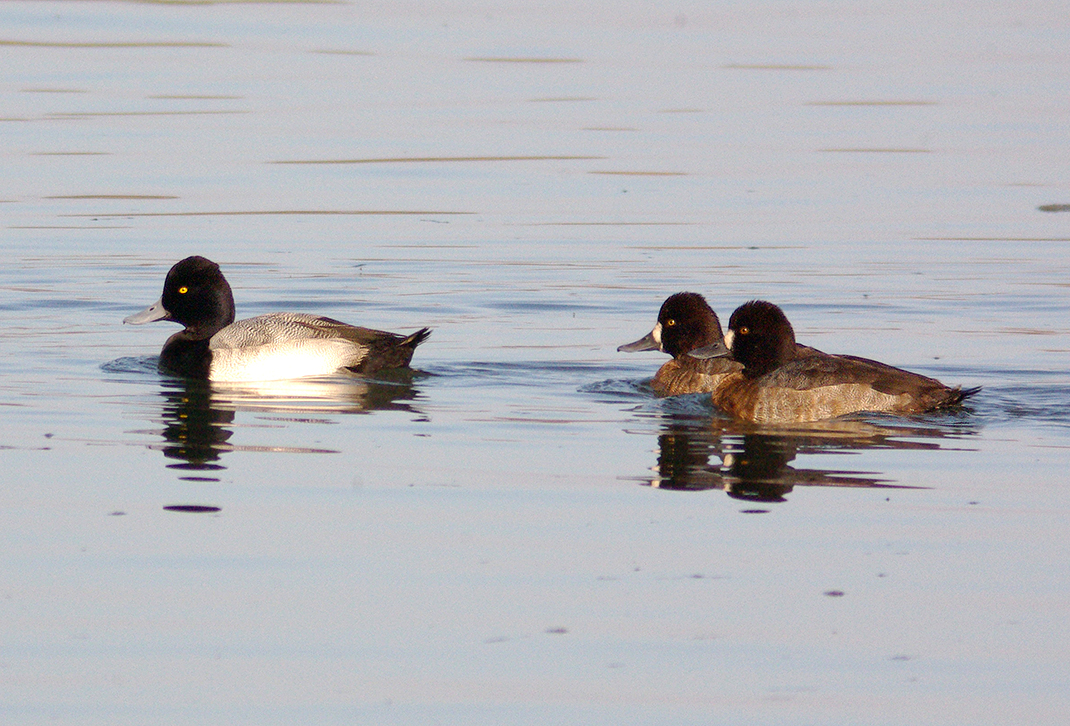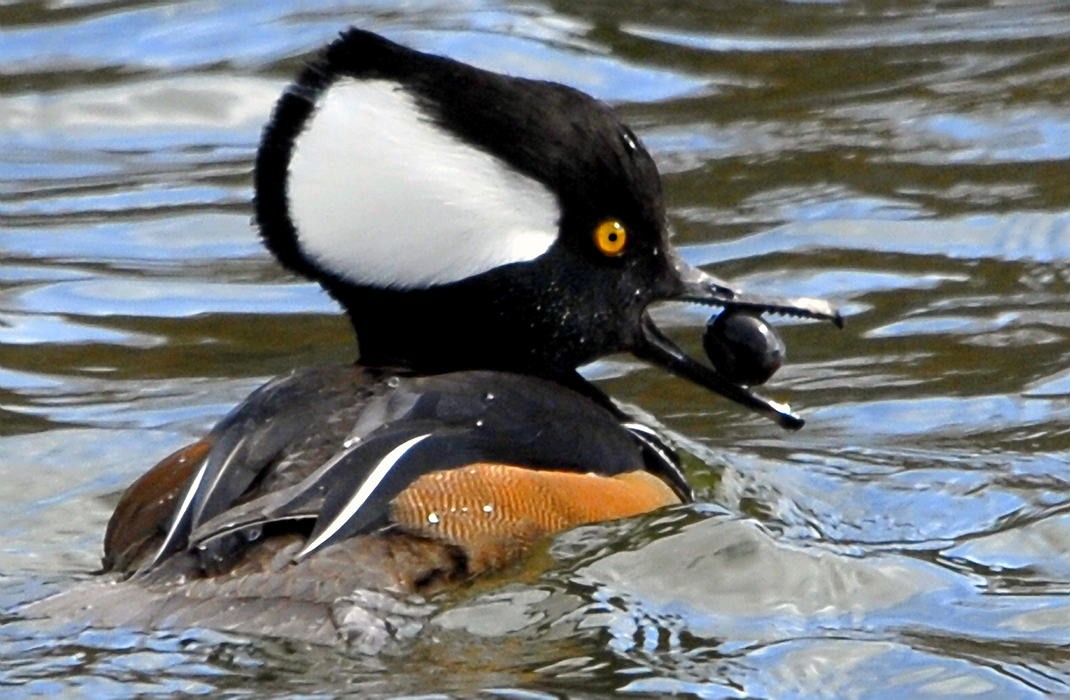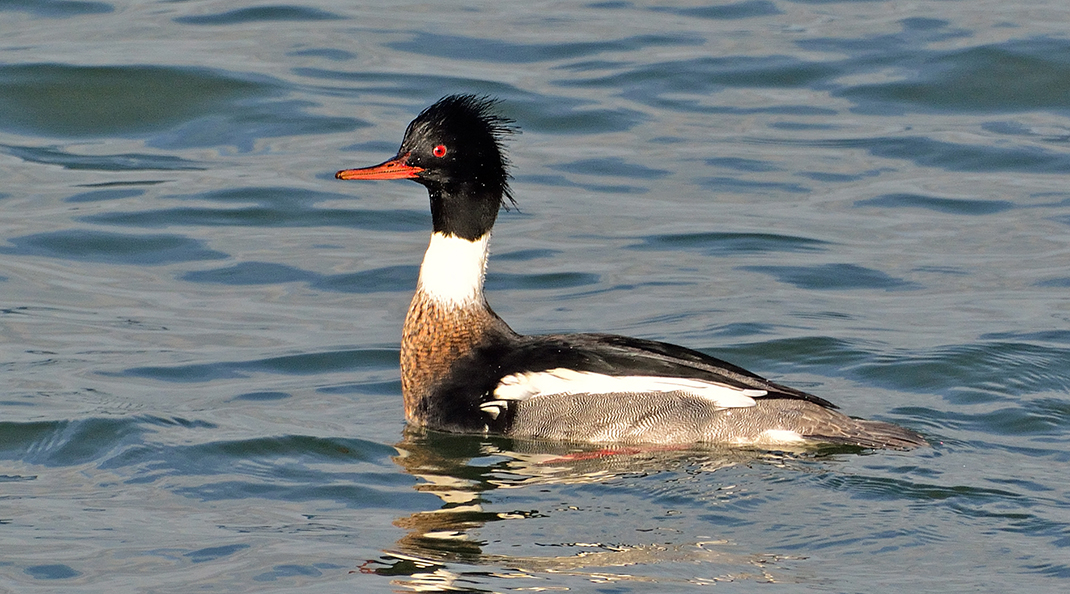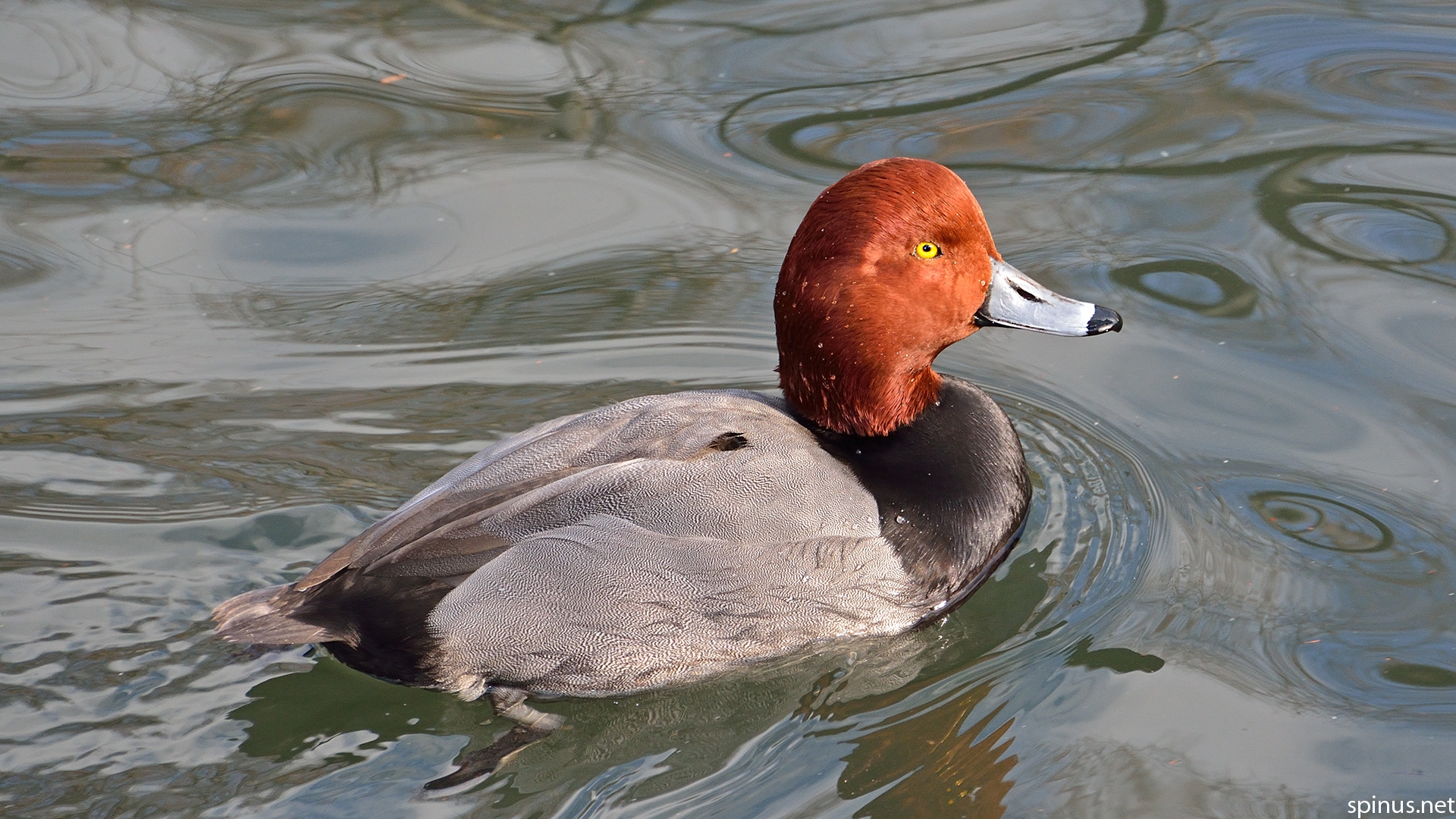As the expression goes, "If it walks like a duck and talks like a duck, then it probably is a duck."
But is it a dabbler or a diver?
More common throughout the year in southeast Tennessee, the dabbler duck feeds by skimming the water's surface with its large bill. A dabbler can most easily be identified through observation of "duck butt," which is when the bird submerges its head and neck, tipping only its tail out of the water.
Examples of a dabbler include the wood duck (Aix sponsa) and the mallard (Anas platyrhynchos).
The diver duck, on the other hand, feeds by propelling its entire body underwater. Most of these species visit our region only during migration or winter months.
To help you identify visiting divers this season, here is a quick snapshot of some the species you might see in lakes, rivers and marshes around the state.
Bufflehead
(Bucephala albeola)
What: Common migrant and winter resident
When: Late October to late April
Where: Ponds, lakes and rivers
Canvasback
(Aythya valisineria)
What: Uncommon migrant and winter resident
When: Late October to late March
Where: State and federally protected waterfowl refuges with deep water
Common goldeneye
(Bucephala clangula)
What: Common migrant and uncommon winter resident
When: Early November to early April
Where: State and federally protected waterfowl refuges and other reservoirs
Lesser scaup
(Aythya affinis)
What: Fairly common winter resident
When: Late October to early May
Where: State and federally protected waterfowl refuges
Hooded mersanger
(Lophodytes cucullatus)
What: Year-round resident of Tennessee, though locally rare in summer, uncommon in winter and fairly common during fall and spring migration.
When: Year-round, though most common from late October to early May
Where: Ponds, lakes and wooded swamps during non-breeding (winter) season
Red-breasted mersanger
(Mergus serrator)
What: Rare winter resident, uncommon migrant
When: Mid-November to early May
Where: Deeper lakes and rivers
Redhead
(Aythya americana)
What: Uncommon winter resident and migrant
When: Early November to late April
Where: Deep lakes and ponds
Ring-necked duck
(Aythya collaris)
What: Fairly common migrant and winter resident, though more common in West and Middle Tennessee
When: Early October to late April
Where: State and federally protected waterfowl refuges
